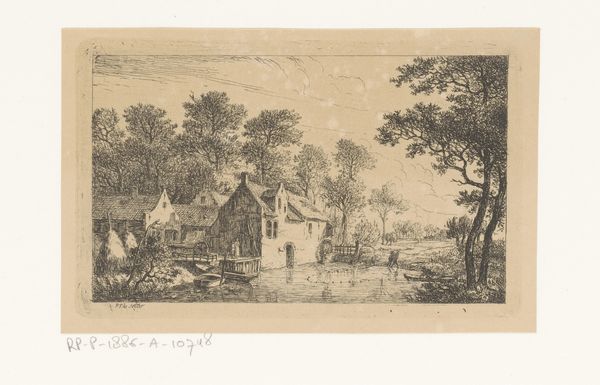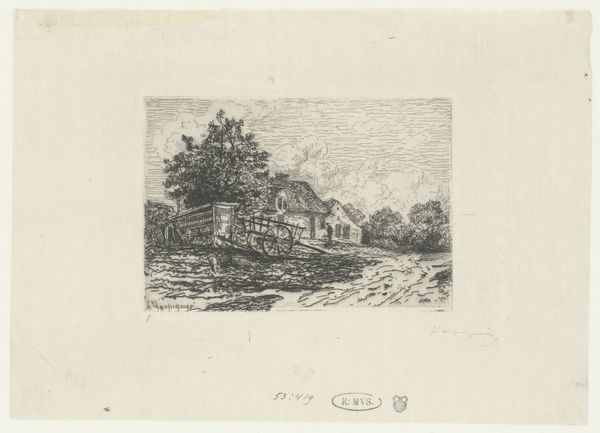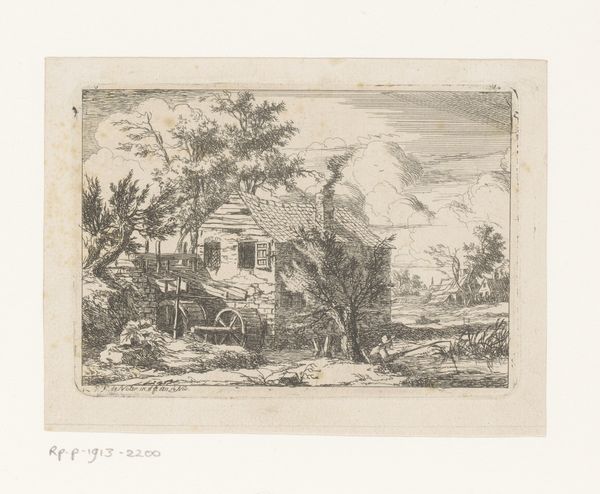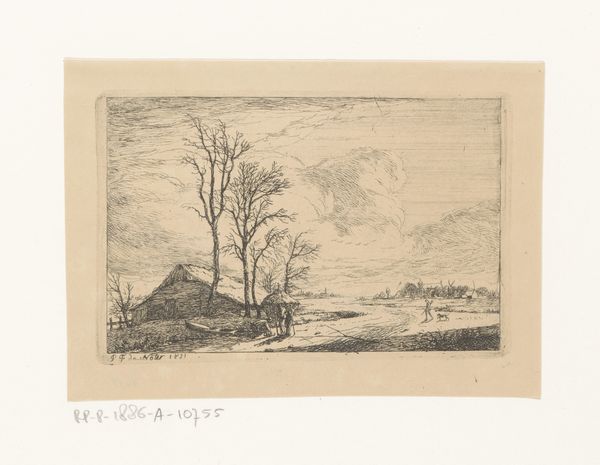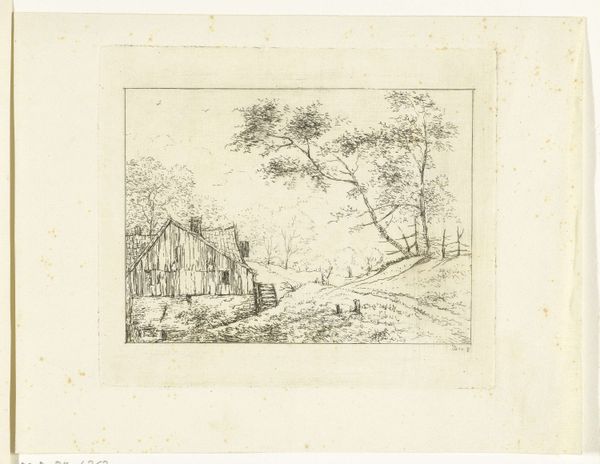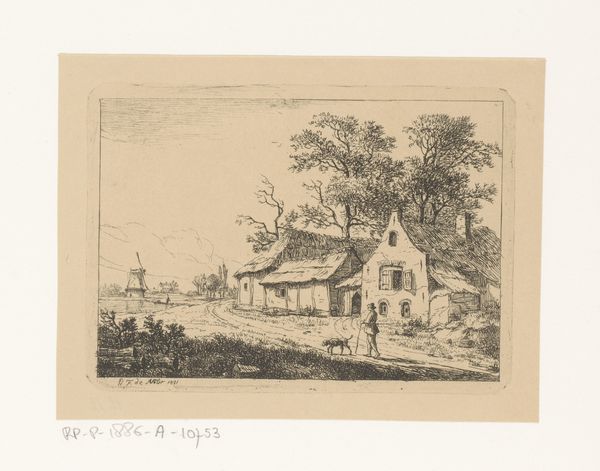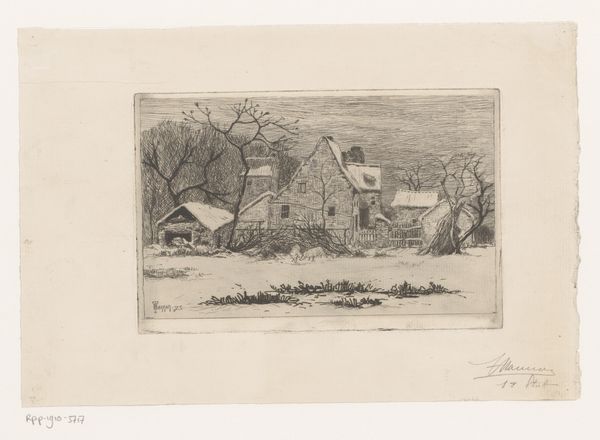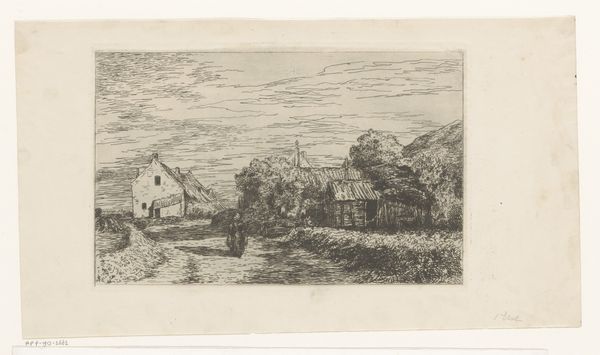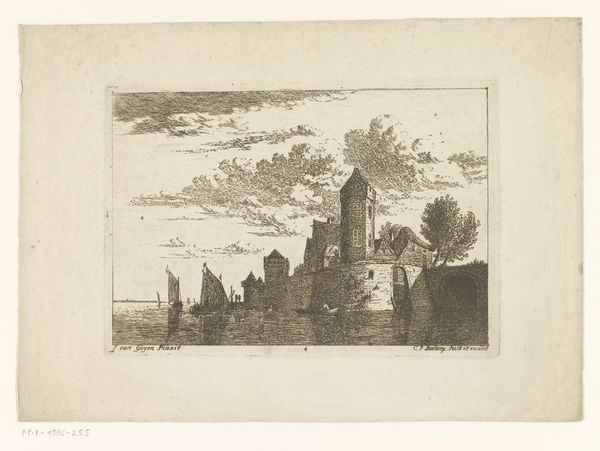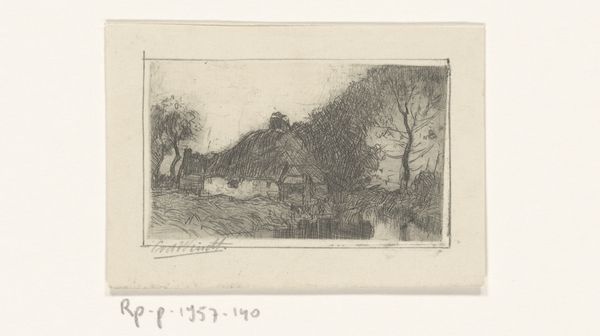
Winterlandschap met bevroren rivier en een dorp op de achtergrond 1831
0:00
0:00
pierrefrancoisdenoter
Rijksmuseum
drawing, print, etching, paper
#
drawing
#
ink paper printed
# print
#
etching
#
landscape
#
river
#
etching
#
paper
#
romanticism
#
realism
Dimensions: height 91 mm, width 138 mm
Copyright: Rijks Museum: Open Domain
Curator: Here we have "Winterlandschap met bevroren rivier en een dorp op de achtergrond," a landscape created in 1831 by Pierre François De Noter. This piece, housed here at the Rijksmuseum, is an etching. Editor: It feels melancholic, doesn't it? The starkness of winter rendered in those tight, delicate lines…like a whisper of a memory on a cold day. Curator: Indeed. De Noter situates us in a specific Dutch historical and social context. Consider the political climate of the 1830s, the echoes of revolution still resonating through Europe, and how the choice of a seemingly simple landscape can become a subtle commentary on nationhood, identity, and the relationship between people and place. Editor: Ah, the socio-political subtext! But for me, it's more personal. The lone house…it's calling up feelings of isolation, but also resilience. That etching…did he labor over every stroke or did the river ice guide his hand, like he's chasing a story that already existed? Curator: Both perspectives have merit. Examining this work through a feminist lens, one could ask about the role of women in these winter landscapes. Were they simply observers, or were their lives inextricably linked to the rhythms of the seasons and the fortunes of the community? Furthermore, exploring the socio-economic implications of a frozen river opens dialogues about survival and communal support structures in times of environmental hardship. Editor: Now you’ve got me thinking about the hands that labored on that ice. I imagine them as rough but sure, faces weathered, connected by their daily efforts. There's a quiet dignity that speaks across centuries through De Noter’s strokes. Curator: Exactly! And analyzing the depiction of the village, its architectural style, and placement within the overall composition reveals crucial information about the societal norms, values, and power dynamics present. De Noter invites a deep interrogation of how we view historical narratives, intertwining individual stories with collective experiences of the time. Editor: You know, all this analysis only adds to its impact for me. What I saw as simple becomes complex and interconnected. Makes me see it differently now. Curator: Precisely, seeing art within the continuum of historical and social discourses allows a more enriched dialogue.
Comments
No comments
Be the first to comment and join the conversation on the ultimate creative platform.
